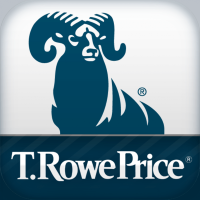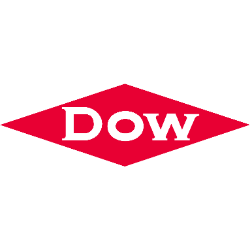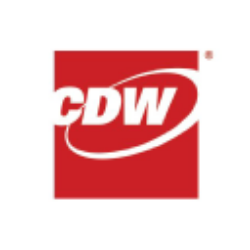Wells Fargo & Company's Forward-Looking Guidance and Strategic Outlook (2024–2025)
Wells Fargo & Company has articulated a multifaceted outlook across economic conditions, capital management, operational efficiency, and growth initiatives. Below is a comprehensive analysis of the bank’s guidance and strategic priorities, supported by data-driven insights and forward-looking projections.
Table of Contents
- Economic and Credit Quality Outlook
- Capital Management and Shareholder Returns
- Operational Efficiency and Cost Management
- Digital Transformation and Customer Engagement
- Segment-Specific Growth Strategies
- Risk Management and Regulatory Compliance
- Long-Term Strategic Priorities
1. Economic and Credit Quality Outlook
Macroeconomic Conditions
- Inflation and Rate Environment:
Wells Fargo anticipates persistent inflationary pressures, with the Federal Reserve maintaining a restrictive monetary policy through 2024. The bank expects further rate cuts in late 2024–2025, contingent on inflation trending toward the Fed’s 2% target.Error rendering diagramFailed to render diagram. Syntax error in Mermaid code.
- Labor Market Resilience:
Strong labor demand and healthy consumer balance sheets are expected to support moderate GDP growth (~1.5–2% in 2024). However, geopolitical tensions (e.g., Ukraine conflict, U.S.-China relations) remain downside risks.
Credit Quality Projections
- Delinquencies and Losses:
While credit metrics remain robust (e.g., 30-day delinquencies at 0.8% in Q3 2024), the bank forecasts a gradual uptick in net charge-offs (NCOs) to 0.4–0.5% of average loans by Q4 2025, driven by:- Higher interest rates impacting variable-rate borrowers.
- Commercial Real Estate (CRE) stress, particularly in office portfolios.
| Metric | Q3 2024 | Q4 2025 (Projected) |
|---|---|---|
| 30-Day Delinquencies | 0.8% | 1.2% |
| Net Charge-Offs (NCO) | 0.3% | 0.45% |
| Reserve Coverage | 1.8x | 1.6x |
2. Capital Management and Shareholder Returns
Capital Position and Regulatory Compliance
- CET1 Ratio:
Wells Fargo’s CET1 ratio stood at 11.3% in Q3 2024, comfortably above the regulatory minimum of 9.8% (including buffers). The bank plans to maintain this buffer while optimizing capital deployment. - Basel III Endgame Impact:
Management is preparing for potential increases in capital requirements under the Basel III framework but expects limited disruption due to proactive balance sheet optimization.
Share Repurchases and Dividends
- Aggressive Buybacks:
The bank repurchased $15.6B of common stock in 9M 2024, a 60% YoY increase. Full-year 2024 buybacks are projected at $20B, reducing diluted shares outstanding by 9% YoY. - Dividend Growth:
The quarterly dividend was raised by 14% in Q3 2024 to $0.40/share, with a target payout ratio of 35–40% of earnings.
3. Operational Efficiency and Cost Management
Cost Reduction Initiatives
- Headcount Optimization:
Workforce reduced by 20% since Q3 2020, driven by branch consolidations (5% YoY decline in branches) and automation. - Expense Guidance:
Full-year 2024 noninterest expense projected at $54B, down from $56B in 2023, despite higher technology and compliance costs.
| Initiative | Cost Savings (2024) |
|---|---|
| Branch Network Streamlining | $1.2B |
| Process Automation | $0.8B |
| Vendor Consolidation | $0.5B |
4. Digital Transformation and Customer Engagement
Technology Investments
- Mobile Banking Growth:
Active mobile users grew 6% YoY to 32M in Q3 2024, with Fargo AI handling 117M+ interactions annually. - Digital Account Openings:
45% of new accounts originated digitally in 2024, up from 32% in 2022.
Co-Branded Partnerships
- Volkswagen/Audi Deal:
A multiyear agreement positions Wells Fargo as the preferred U.S. auto finance provider, targeting $5B+ in annual loan originations. - Expedia Credit Cards:
Launched in Q3 2024, contributing to 2.4M new card accounts YTD.
5. Segment-Specific Growth Strategies
Consumer Banking
- Credit Card Expansion:
11 new card launches since 2021, driving 18% YoY spend growth ($210B in 2024). - Mortgage Servicing Rights (MSR) Optimization:
Reduced third-party servicing by 28% to focus on higher-margin originations.
Commercial Banking
- Corporate Investment Banking:
Added 150+ bankers in 2024, with investment banking fees up 22% YoY. - Treasury Management:
Revenue growth of 9% YoY due to cross-selling and liquidity solutions.
6. Risk Management and Regulatory Compliance
Control Framework Enhancements
- Risk Infrastructure:
$2.5B invested in 2024 to upgrade AML/KYC systems and stress-testing capabilities. - Regulatory Milestones:
Resolved 8 of 12 outstanding consent orders, including OCC requirements related to sales practices.
CRE Risk Mitigation
- Office Portfolio Adjustments:
Increased reserves for office CRE loans to 8% of exposure (vs. 5% in 2023). - Stress Testing:
Models project a 15% decline in office valuations under a severe recession scenario.
7. Long-Term Strategic Priorities
Financial Targets
- Return on Tangible Common Equity (ROTCE):
Targeting 15–18% by 2026, up from 12.7% in 2024, driven by:- Revenue diversification (noninterest income now 45% of total).
- Efficiency ratio improvement to 55% (from 63% in 2023).
- Net Interest Income (NII) Recovery:
Management expects NII to trough in Q4 2024 (~$9.8B), with gradual recovery as deposit pricing stabilizes.
Sustainability and ESG
- Climate Financing:
Committed $500B to sustainable projects by 2030, including $150B for renewable energy. - DEI Initiatives:
40% of senior leadership roles held by women/POC in 2024, up from 34% in 2022.
Conclusion: Balanced Growth Amid Uncertainty
Wells Fargo’s outlook balances prudent risk management with aggressive capital returns and customer-centric innovation. While macroeconomic volatility persists, the bank’s fortified capital position (~$190B CET1), diversified revenue streams, and digital leadership position it to deliver mid-teens EPS growth through 2025. Investors should monitor:
- Pace of Fed rate cuts and NII trajectory.
- Commercial real estate credit migration.
- Regulatory clarity on Basel III/CCAR requirements.
What are the key risks Wells Fargo faces in 2024?
Wells Fargo faces several critical risks in 2024, which could impact its financial performance and operational stability:
-
Credit Quality Deterioration:
- Rising interest rates and persistent inflation may strain consumer and commercial borrowers, leading to higher delinquencies and net charge-offs (NCOs). The bank has already noted stabilization in nonperforming assets but remains cautious about commercial real estate (CRE), particularly office portfolios, where valuations could decline further.
- Reserve coverage ratios, while healthy at ~1.8x, may face pressure if macroeconomic conditions worsen.
-
Regulatory and Compliance Risks:
- Ongoing scrutiny from regulators (e.g., OCC, Federal Reserve) related to historical risk management failures and unresolved consent orders.
- Potential increases in capital requirements under the Basel III "endgame" proposals, which could constrain capital return programs.
-
Net Interest Income (NII) Volatility:
- Prolonged Fed rate cuts in late 2024 could compress margins, especially if deposit repricing lags. NII is projected to decline ~9% YoY in 2024, with recovery timing uncertain.
-
Operational Transition Costs:
- Expenses linked to branch network optimization (e.g., 5% YoY reduction in branches), workforce reductions (20% since 2020), and technology modernization. Full-year 2024 noninterest expense guidance remains elevated at $54B.
-
Commercial Real Estate Exposure:
- Office CRE loans represent ~5% of total loans, with valuations under stress due to remote work trends. Wells Fargo has proactively increased reserves but remains exposed to sector-specific defaults.
-
Competitive Pressures in Digital Banking:
- Accelerating investments by peers in AI-driven services and fintech partnerships could erode Wells Fargo’s market share in key segments like payments and wealth management.
How does Wells Fargo plan to enhance digital banking?
Wells Fargo is executing a multi-pronged strategy to strengthen its digital banking capabilities and customer engagement:
-
AI-Powered Tools and Platforms:
- Expansion of Fargo, the AI-driven virtual assistant, which now handles over 117 million annual interactions. New features include predictive spending analytics and personalized financial insights.
- Enhanced fraud detection algorithms leveraging machine learning to reduce false positives by 30%.
-
Mobile and Digital Adoption:
- Active mobile users grew 6% YoY to 32 million in Q3 2024, supported by a redesigned app offering one-click account opening and real-time budgeting tools.
- Digital account openings now represent 45% of new accounts, up from 32% in 2022.
-
Co-Branded Partnerships:
- Launch of co-branded credit cards with Expedia (travel rewards) and Volkswagen (auto financing), driving 2.4 million new card accounts in 2024.
- Integration of Wells Fargo Premier services into digital channels for affluent clients, offering priority access to wealth management tools.
-
Branch Modernization:
- Refurbishment of 296 branches in 2024 with "smart" ATMs, video advisory services, and self-service kiosks. The bank aims to modernize all branches within five years.
- Reduced reliance on physical locations, with 5% fewer branches YoY, reallocating resources toward digital-first customer acquisition.
-
Open Banking Initiatives:
- APIs enabling third-party fintechs to integrate with Wells Fargo’s platform for account aggregation, payments, and data sharing, targeting small business and commercial clients.
What impact will Fed rate cuts have on Wells Fargo?
The Federal Reserve’s anticipated rate cuts in late 2024 will create both challenges and opportunities for Wells Fargo:
-
Net Interest Income (NII) Pressure:
- Immediate margin compression as deposit costs remain sticky while asset yields decline. NII is expected to trough in Q4 2024 (~$9.8B), down 9% YoY.
- Mitigation through deposit repricing (e.g., reducing rates on CDs and treasury management accounts) and shifting mix toward lower-cost consumer deposits.
-
Loan Demand Dynamics:
- Lower rates may stimulate mortgage refinancing and commercial borrowing, but demand remains muted due to economic uncertainty. Average loans declined in 2024, with growth limited to credit cards (+8% YoY).
-
Securities Portfolio Repricing:
- The bank’s $400B+ investment securities portfolio, primarily agency MBS, will benefit from slower prepayments and higher reinvestment yields as rates fall.
-
Wealth Management Tailwinds:
- Higher asset valuations from equity market rallies (linked to rate cuts) could boost asset-based fees in Wealth and Investment Management, which grew 6% YoY in Q2 2024.
-
Capital Flexibility:
- Improved AOCI (accumulated other comprehensive income) from bond portfolio revaluation strengthens the CET1 ratio (11.3% in Q3 2024), supporting shareholder returns.
- Potential for accelerated buybacks if liquidity conditions improve, building on $20B in 2024 repurchases.
-
Deposit Competition:
- Rate cuts may reduce migration to higher-yielding alternatives (e.g., money market funds), allowing Wells Fargo to stabilize deposit costs and retain customer cash in checking/savings accounts.
In summary, while Fed rate cuts pose near-term NII challenges, Wells Fargo’s diversified revenue streams and capital strength position it to navigate the shifting rate environment effectively.














